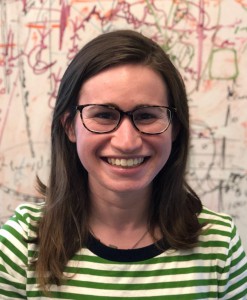Join the Hub of Biomedical Citizen Science Collaboration with CitSciBio
Posted on Categories Discover Magazine

By Nina Friedman
Learn, collaborate, and share your citizen science project tools at CitSciBio.org!
Back in 2012, Dr. Jennifer Couch and her colleagues at the National Institute of Health realized there was something missing in the greater biomedical citizen science community. The community did not have its own online collaboration platform.
Couch approached Katrina Theisz, a program analyst at NIH, and together they formed a working group. After a series of workshops exploring how citizen science related to biomedical research, they ultimately realized that the biomedical citizen science movement was almost too dispersed to be considered a single group. This international community of patients, medical professionals, researchers and hobbyists held a wonderful variety of perspectives, but one aspect of their diversity was an obstacle: the community used a many different platforms to share ideas. If the biomedical citizen science community had a centered location where they could run their projects, gather participants and educate the greater public, they could pool their power.
Couch and Theisz decided they could unite the community by taking all the tools biomedical citizen scientists were using and put them in a single location — a “hub,” if you will. In this hub, people wouldn’t be divided by their connection to the movement or the various terms they use to describe what they were doing. They could be “community based participatory researchers,” “DIY scientists,” “citizen scientists” or even “biohackers,” all in one space.
They built on the National Cancer Informatics Program hub, a collaboration platform for cancer data researchers. Ultimately their project became the Biomedical Citizen Science Hub, or CitSciBio. Similar to the NCIP hub, Theisz wanted the hub to be “an all in one collaboration platform, combining tools like Slack, Dropbox and Trello and integrating them with different available resources.” In fact, if you have an account with SciStarter, you can use this account to personalize your use of the Biomedical Citizen Science Hub.
One active user, Dr. Ginger Tseung of the Scripps Research Institute, leads Mark2Cure. Mark2Cure allows citizen scientists to create concept maps that uncover clues about the relationship between scientific articles. Tseung along with some of the Mark2Curators have been using the CitSciBio hub to collaborate on a teacher’s toolkit for their project. Currently their working group is private, but Tseung says they “expect to open up the group and invite project leaders to join our effort so that we can apply what we learn in the process (and the framework that we build) to extend the teaching toolkits beyond Mark2Cure— to biomedical citizen science projects in general.” In the future, project leaders like Tseung will have a foundation to build their tools on, making citizen science even more accessible.
Theisz finds the online citizen science community to be open and embracing. She remembers attending a citizen science event and recognizing the name of another attendee, Dr. Nicole Garneau, who leads the Genetics of Taste Lab at the Denver Museum of Nature and Science. Theisz was stumped as to how they might know each other until Garneau excitedly approached her, explaining that they had conversed about citizen science on twitter as @yopearlscigirl and @citscibio. Theisz hopes that the CitSciBio hub can inspire similar connections that are initially sparked in the virtual space, eventually transcending it.
Today CitSciBio has about ten active groups and over 300 members. Some of the projects on the hub are just starting out; part of the utility of the hub is that its resources are made specifically for establishing the foundation of an idea. Other projects, like Mark2Cure, have their own platform external to the CitSciBio hub. Just like Couch and Theisz imagined, the hub is growing into a place where all types of biomedical citizen scientists can come together as one.
Want more citizen science? Check out SciStarter’s Project Finder! With 1100+ citizen science projects spanning every field of research, task and age group, there’s something for everyone!
Nina Friedman researches neuroscience and data visualization with the Moore Lab at Brown University. Find her on twitter @ngfriedman138